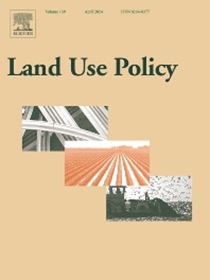Spatio-temporal evolution of vertical urban growth in China’s Yangtze River Delta from 1990 to 2020
IF 6
1区 社会学
Q1 ENVIRONMENTAL STUDIES
引用次数: 0
Abstract
Building height changes are an important feature of urbanization. Accurately capturing the spatio-temporal dynamics of building height changes is crucial for characterizing urban expansion patterns. Previous studies of urbanization have mainly focused on horizontal expansion and lacked attention to vertical growth. This study investigated vertical growth in a rapidly urbanizing region, the Yangtze River Delta (YRD) region of China, from 1990 to 2020 to reveal the changing spatio-temporal distribution of building height. We also analyzed how major socio-economic factors and policies influence the increase in the number of new high-rise buildings. The results show that the fastest vertical expansion occurred in Shanghai, southern Jiangsu, northern Zhejiang, and eastern Anhui, revealing an uneven pattern of urban vertical growth across the YRD region and potentially leading to the urban ecological, environmental, and public health concerns in these areas. The number of newly added pixels rose from 1991 to 2015 and reached its maximum from 2011 to 2015 (11,084,153, corresponding to 9975.74 km²). However, it started to fall back from 2016 to 2020 (5,488,574, 4939.72 km²). Most added building heights were 9–24 m, corresponding to 3–8 floors. The YRD had the maximum number of new high-rise building pixels from 2011 to 2015 (475,284, 427.76 km²). The number of new high-rise buildings positively correlates with GDP, population, and the percentage of tertiary industry while negatively correlated with the percentage of secondary industry. In alignment with the United Nations Sustainable Development Goal (SDG) 11’s targets on affordable housing and sustainable urbanization, our analysis of vertical expansion can provide an important perspective for understanding the mechanism of urban vertical growth in urbanization and guide policy interventions to balance economic growth with ecological preservation for rapidly urbanizing regions worldwide.
求助全文
约1分钟内获得全文
求助全文
来源期刊

Land Use Policy
ENVIRONMENTAL STUDIES-
CiteScore
13.70
自引率
8.50%
发文量
553
期刊介绍:
Land Use Policy is an international and interdisciplinary journal concerned with the social, economic, political, legal, physical and planning aspects of urban and rural land use.
Land Use Policy examines issues in geography, agriculture, forestry, irrigation, environmental conservation, housing, urban development and transport in both developed and developing countries through major refereed articles and shorter viewpoint pieces.
 求助内容:
求助内容: 应助结果提醒方式:
应助结果提醒方式:


